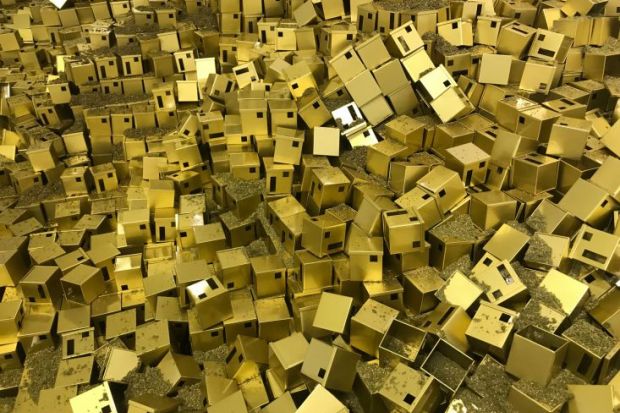My solo exhibition The Punishment of Luxury showcases themes of territory and conflict, which are evident across much of my work, alongside my Palestinian heritage. It feels very moving to be exhibiting the piece in Umm el-Fahem, Israel’s largest Arab majority city and in the region that has been a continual source of inspiration for me.
Connecting people through discussions on refugees and war-torn nations and offering exposure to some of the most harrowing humanitarian issues has always been important to me as an artist.
The installation is fully immersive: it comprises 10,000 model houses filled with the aromatic herb za’atar. Za’atar has a strong cultural relevance as it is often a staple in Palestinian households, and it alludes to the 1976 massacre of Tel al Za’atar, which saw the destruction of a Palestinian refugee camp in Beirut and the death of 2,000 inhabitants.
In the exhibition’s centrepiece, za’atar spills from the doors and windows of the model houses, demonstrating how our identities are unable to be confined. It is designed to provoke reflection on how our political, cultural and religious identities leak from the constraints we try to place on them.
I’m often asked how I manage to practise as a conceptual artist and to lead a university, and the answer is that the two feed into one another. As vice-chancellor of the second largest arts university in Europe, the University for the Creative Arts, I interact daily with a diverse group of people and am exposed to the latest innovations in creativity, business and technology. This kind of stimulation and interaction with ideas directly feeds into my concerns as an artist.
I’m aware that continuing to exhibit my work makes me something of an anomaly among UK vice-chancellors. But I believe passionately that higher education leaders need to maintain a personal connection with the subjects they teach – both practically and theoretically.
The only way you can drive an institution forward is by remaining critically engaged and contributing to the discourse. This is of paramount importance for a specialist creative institution like UCA as the boundaries between art, design and business blur to the point of being barely discernible.
By continuing to practise, to research and to publish widely, I ensure that my understanding of the world into which our students will be graduating remains current and accurate. There is no more effective way of protecting the relevance of our curriculum than by ensuring that the institution is staffed by those who continue to innovate in their fields.
My own work relies heavily on technology. The model houses for this exhibition, for example, were produced out of my studio in China, which allows me to use large-scale industrial manufacturing processes. I am able to use an ideas-driven approach to production, enabling me to plan work in advance and even to test it through digital simulation before it is produced.
Here in the UK, our multibillion-pound creative industries are world-leading, yet there still seems to be a prevailing attitude that a creative education is somehow inferior to grounding in a STEM subject. This attitude arises from a very limited – and outdated – understanding of what constitutes a creative discipline. At UCA we teach far more than artistic techniques. We help to develop agile minds that can problem-solve and innovate in any arena of the global economy. Our graduates are equally as able to thrive in politics and business as they are in fashion or graphic design because we teach them how to develop their own unique vision.
To move any business forward, you need people who can take risks to offer something new and unique. Universities are no different. By continuing to practise, to exhibit and to develop as an artist, I enhance my performance as a vice-chancellor and ensure that our students receive an excellent grounding in the creative arts, business and technology.
Bashir Makhoul is vice-chancellor of the University for the Creative Arts and the first Palestinian academic to hold a UK vice-chancellorship. His exhibition will run at the Umm el-Fahem Art Gallery until 23 March.
